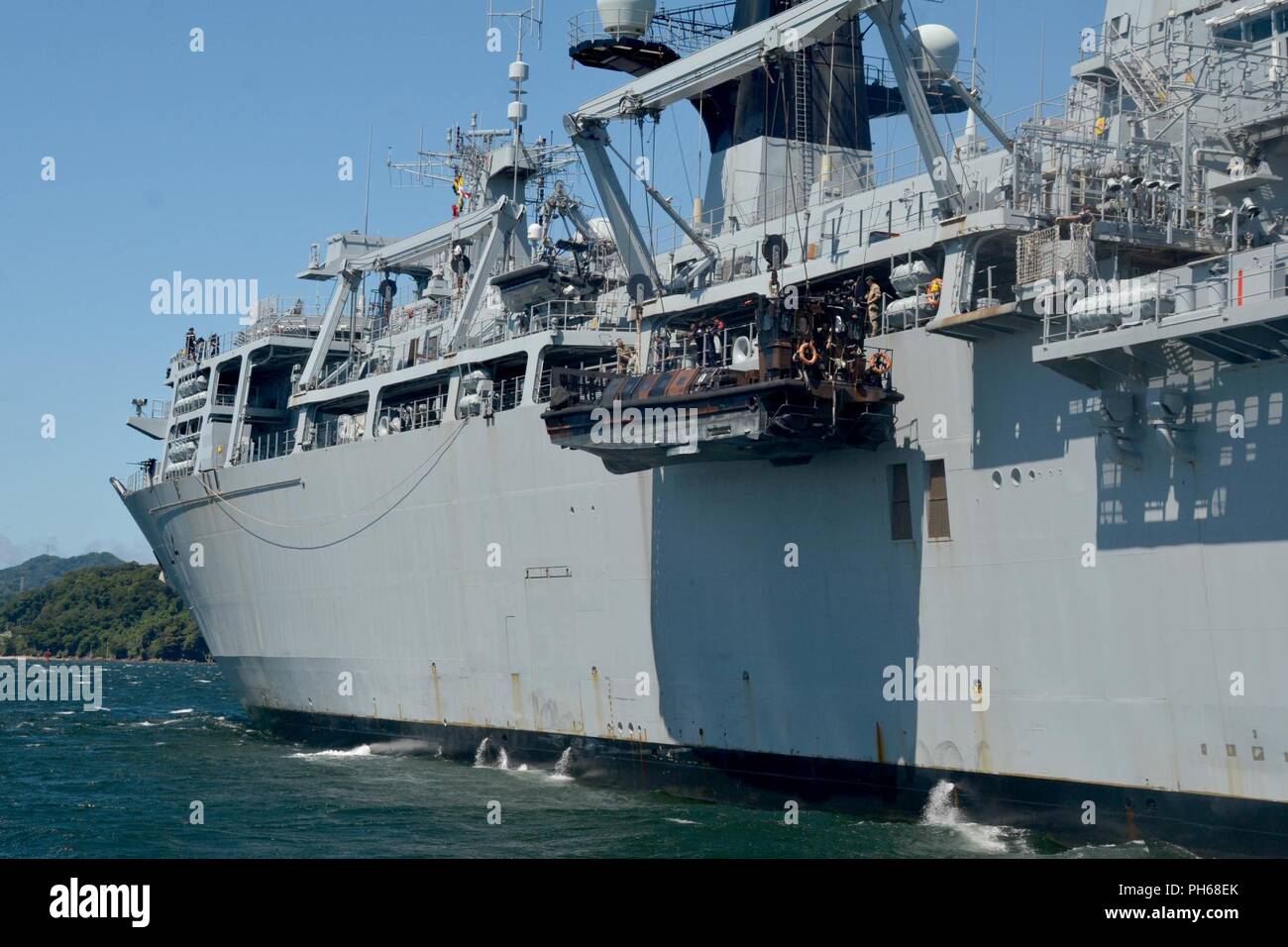

It would be the only initial entry point for the U.S. Had the North Korean surprise operation succeeded, the outcome of the war might have been very different, because by the beginning of August, Pusan was the last remaining port in South Korea that had not fallen to the North Koreans. At the time, the port of Pusan was very poorly defended. The “Battle of the Korea Strait,” as the ROKN would call it, had major strategic importance.

Bak Du San suffered two dead and two wounded. ROKN sailors used M-1 rifle fire against North Korean troops that tried to reach their vessel. In a running gun battle at ranges of less than 400 yards, Bak Du San sank the steamer as she tried to flee, with the loss of almost all the North Korean troops on board. On the night of 25–26 June 1950, the steamer was carrying 600 troops of the North Korean 766th Independent Infantry Regiment with the intent of seizing the port of Pusan. transport that had been hijacked by South Korean Communist guerillas in October 1949 and taken to the North. The unidentified 1,000-ton steamer was actually a former U.S. Bak Du San then engaged the steamer with her single 3-inch gun and six 50-caliber machine guns.

Bak Du San then turned her searchlight on the steamer and received heavy machine-gun fire in return that killed the helmsman and seriously wounded the officer of the deck. The submarine chaser Bak Du San (PC-701), the former USS PC-823, challenged the unidentified steamer with signal lights, but received no response.

Before dawn on 26 June 1950, the most capable ship in the ROKN was underway from the main base at Chinhae and was on patrol about 18 miles from Pusan (now Busan) at the southeast tip of the Korean Peninsula, and sighted an unidentified ship in the darkness. The lone bright spot in an overwhelmingly bleak situation on the first days of the attack was provided by the fledgling Republic of Korea Navy (ROKN). The Battle of the Korea Strait, 26 June 1950 The NKPA would be in the outskirts of the ROK capital of Seoul by early on 27 June.
#Royal navy h force full#
By the end of the first day, ROK ground forces had been decimated and were in full retreat, and the South Korean air force (about half a dozen trainers and no combat aircraft) was of no use. troops from Korea in 1948 would risk a Communist North Korean attempt to reunify Korea by force, and there had been extensive warning of the North Korean build-up of strength and capability along the border, the exact timing of the attack still came as a surprise. The 6th and 1st NKPA Infantry Divisions attacked farther west before funneling into Seoul, while the 7th Infantry Division attacked through the central mountains and the 5th Infantry Division attacked southward on the highway along the ROK east coast on the Sea of Japan (East Sea to the Koreans).Īlthough there had been strategic intelligence warning that the withdrawal of U.S. The armored brigade and two NKPA infantry divisions (the 3rd and 4th Divisions), with two divisions in reserve, headed directly toward the ROK capital of Seoul, only 30 miles south of the 38th Parallel. Spearheaded by about 200 Soviet-supplied T-34 tanks and 120 fighter and ground-attack aircraft, along with heavy artillery and with the advantage of tactical surprise, the North Koreans quickly routed the 38,000 Republic of Korea (ROK) troops in the forward area, who had no tanks, no anti-tank weapons, no air support, not much training, and no warning. At 0400 on Sunday morning, 25 June 1950, in four main avenues of attack, an armored brigade and six divisions totaling 89,000 soldiers of the North Korean People’s Army (NKPA) poured across the 38th Parallel marking the boundary between the Democratic People’s Republic of Korea (North Korea) and the Republic of Korea (South Korea).


 0 kommentar(er)
0 kommentar(er)
